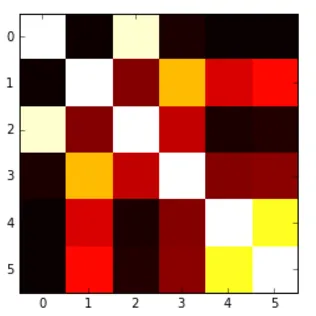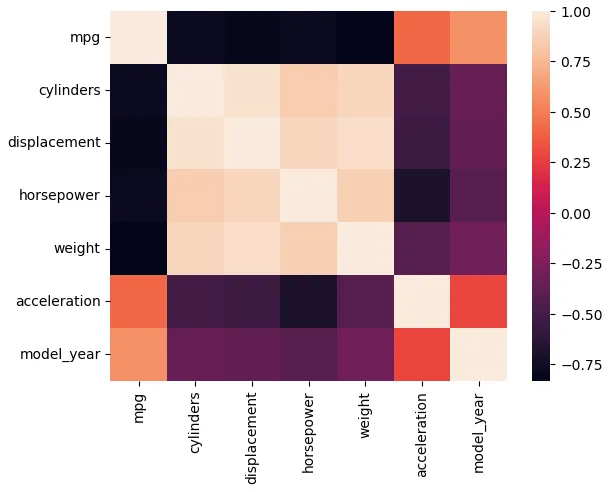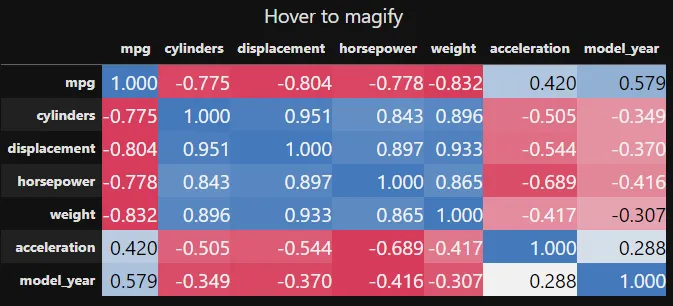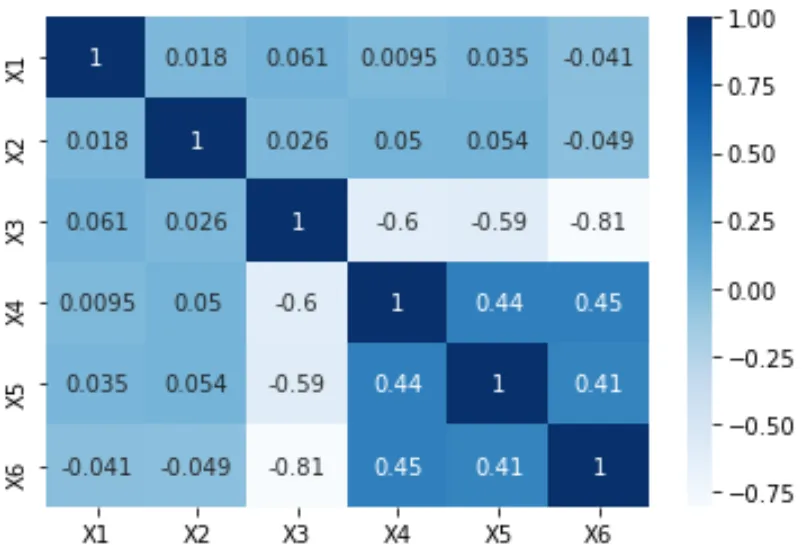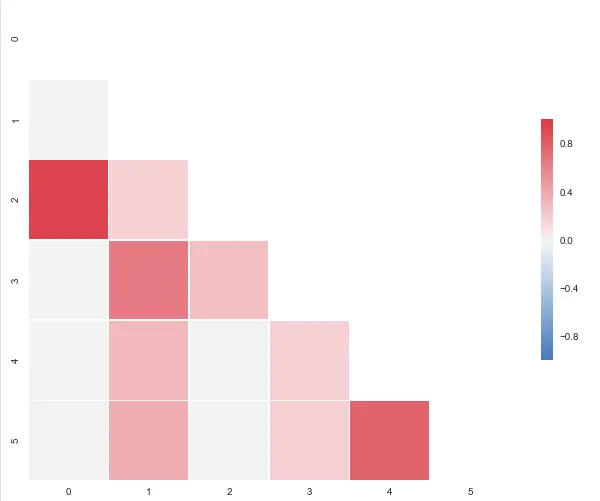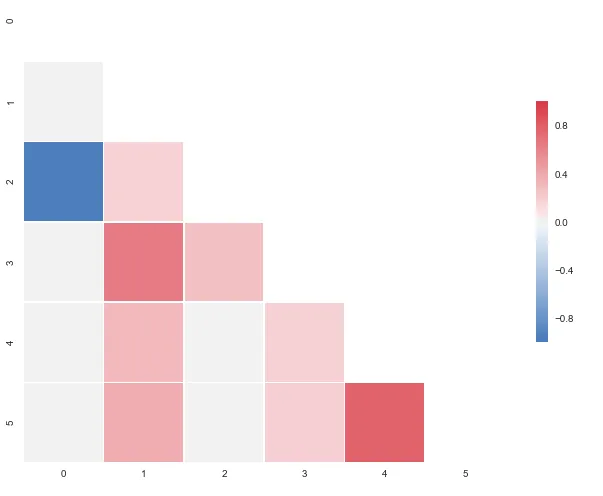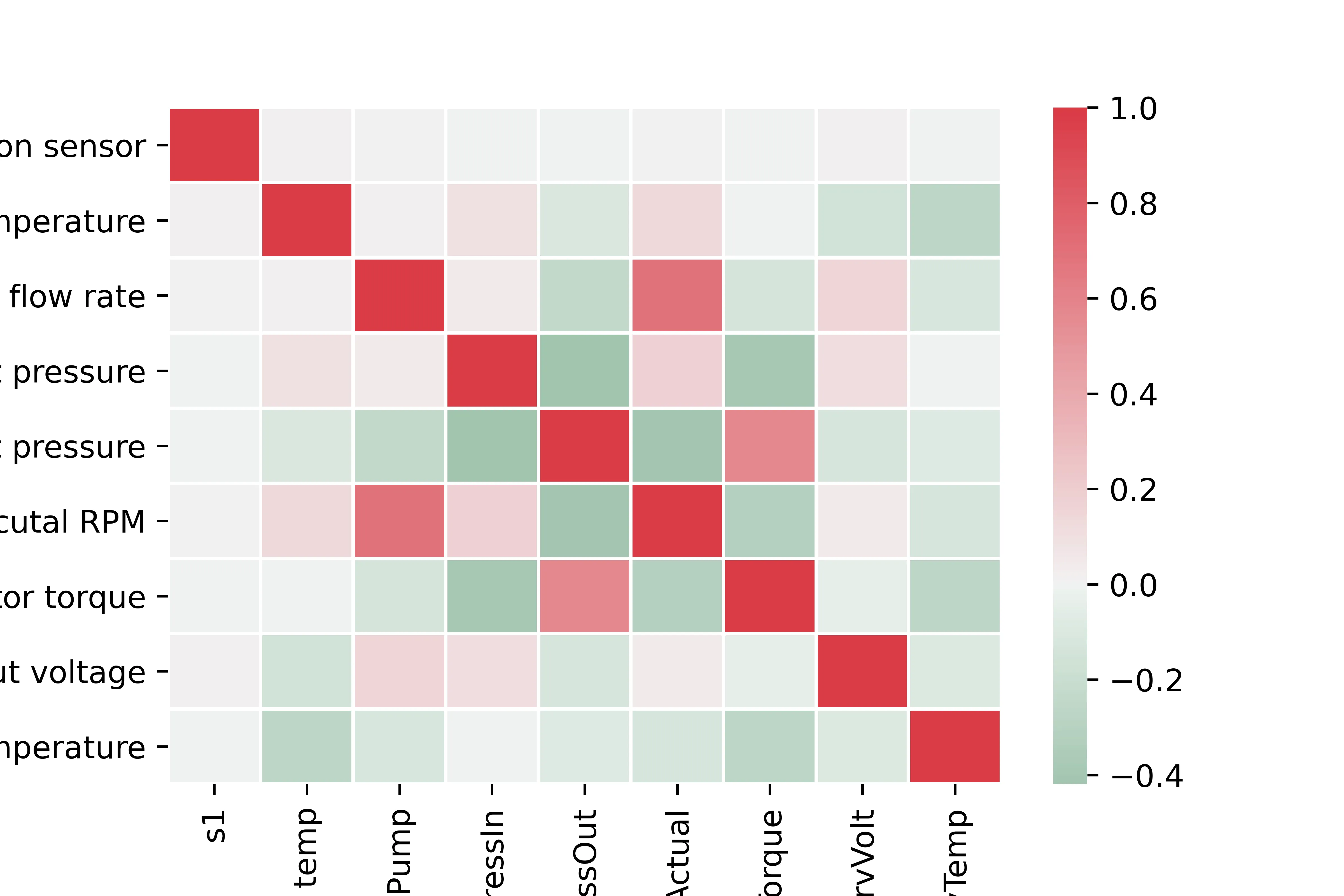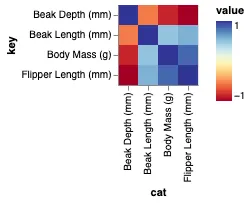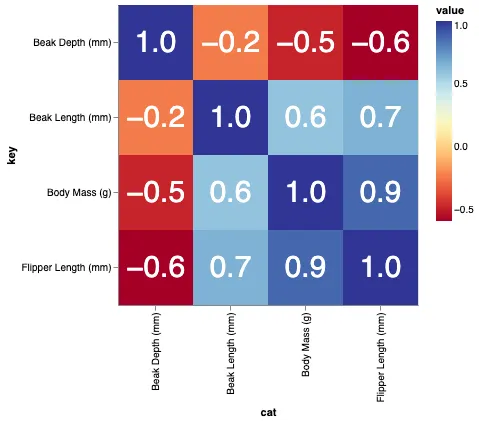我想用热力图来表示相关矩阵。在R中有一个叫做correlogram的东西,但我不认为Python中有这样的功能。
我该如何做到这一点?值的范围从-1到1,例如:
我能根据另一个问题生成以下热力图,但问题是我的值在0处被“截断”,所以我希望有一张从蓝色(-1)到红色(1)的地图,或者类似的东西,但这里的负值没有以适当的方式呈现。 这是那段代码:
我该如何做到这一点?值的范围从-1到1,例如:
[[ 1. 0.00279981 0.95173379 0.02486161 -0.00324926 -0.00432099]
[ 0.00279981 1. 0.17728303 0.64425774 0.30735071 0.37379443]
[ 0.95173379 0.17728303 1. 0.27072266 0.02549031 0.03324756]
[ 0.02486161 0.64425774 0.27072266 1. 0.18336236 0.18913512]
[-0.00324926 0.30735071 0.02549031 0.18336236 1. 0.77678274]
[-0.00432099 0.37379443 0.03324756 0.18913512 0.77678274 1. ]]
我能根据另一个问题生成以下热力图,但问题是我的值在0处被“截断”,所以我希望有一张从蓝色(-1)到红色(1)的地图,或者类似的东西,但这里的负值没有以适当的方式呈现。 这是那段代码:
plt.imshow(correlation_matrix,cmap='hot',interpolation='nearest')
